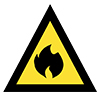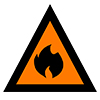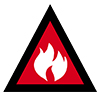Bushfire emergency alerts and what to do
Understand the different bushfire alert levels and what to do if there is a bushfire in your area.
Last updated: 22 November 2023
Understand the 3 levels of bushfire alerts
You may hear a warning message on the television or radio, such as a siren. You may receive a message by text or a phone call.
There are 3 levels of bushfire alerts. They form part of the Australian Warning System.
Advice (Yellow)
A fire has started. There is no immediate danger. Stay up to date in case the situation changes.
Watch and Act (Orange)
There is a heightened level of threat. Conditions are changing and you need to start taking action now to protect you and your family.
Emergency Warning (Red)
An Emergency Warning is the highest level of warning. You may be in danger and need to take action immediately. Any delay now puts your life at risk.
Ways to stay informed
- Find your local ABC radio station. In fires or storms, use a battery-operated radio, as power or mobile networks may be affected.
- For bushfire advice and warnings, visit the Rural Fire Service (RFS) website, Facebook or X (formerly Twitter), or download the Hazards Near Me app.
- Bush Fire Information Line – 1800 679 737.
- Check the roads to plan a safe evacuation. Visit the Live Traffic NSW website, and download the Live Traffic app for iOS or Android.
- Check the air quality in your area.
- You may receive automatic alert messages to your mobile or landline phone. You do not need to register for these alerts, but you should not rely solely on these messages to make a decision to act.
Remember to stay in touch with family, friends and neighbours. Let them know where you are and share important updates with them.
If you are deaf, hard of hearing or have a speech impairment
Contact the National Relay Service (NRS):
- TTY users phone 1800 555 677 then ask for 1800 679 737
- Speak and Listen users phone 1800 555 727 then ask for 1800 679 737
- Internet relay users connect to the NRS then ask for 1800 679 737
- Report a fire or emergency (TTY users only) through TTY 106.
Actions to take during a fire
Follow your bushfire survival plan and protect yourself from bushfire smoke.
You should also:
- change into your protective clothing
- tune into your local ABC radio station
- move your pets to 1 room in your house
- close all windows and doors and use wet towels to block any open spaces under them
- fill your bathtub, buckets and other containers with water to put out spot fires
- connect any pumps and hoses to your water supply. If possible, move them to a place where they will be safe from fire and embers
- block downpipes and fill roof gutters with water
- disconnect downpipes from your rainwater tank
- remove flammable items away from your house
- keep ladders inside to inspect roof space for embers
- check the outside of your home for embers or spot fires and put them out if possible
- just before the fire arrives and if it is safe to do so, soak decks and gardens close to the house.
When the fire has passed
When it's safe, go outside and douse any spot fires, embers or sparks. Embers or sparks can start a fire hours after a fire has passed. For this reason, it's important to check:
- spaces beneath your roof
- under the house, decks and in the garden
- your pets and animals
- any flammable items that may be around your home.
If you can, contact your family and friends and check on your neighbours.


